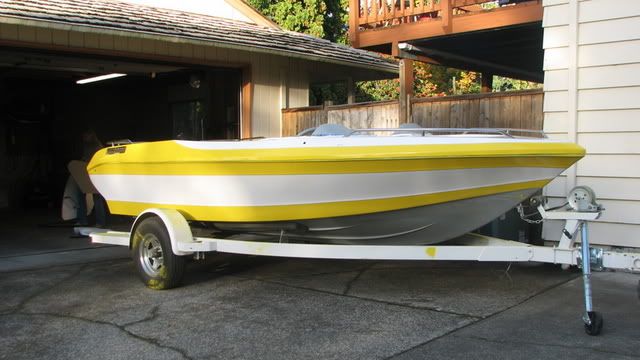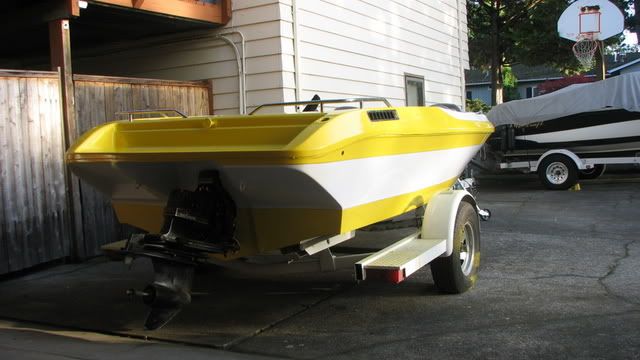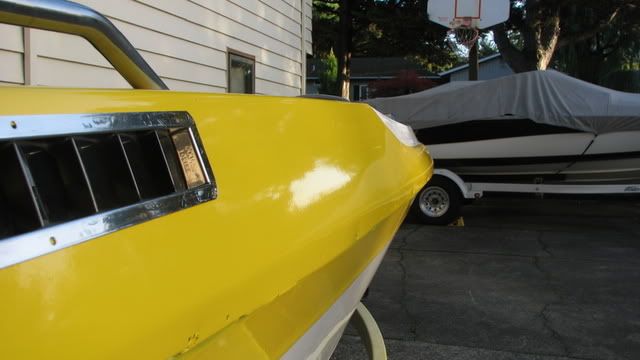Re: Getting closer
It's very simple if it's your own system, you know the next step and your prepared for it. I will try to show my step's
1. Clear the hull of all fitting's rub rail's.
2. Liberally wash down the hull with a dish soap.
3. Liberally wash down the hull again with a styrene, acetone will not work.
4. lightly sand the old gel coat down with no more than 220 grit, wrap the sandpaper in a sponge, you want to prevent any hard spot's cutting a groove that your eye cannot see.
5. Use a high quality painter's tape, do not go cheap here.
6.Fair or fill hole's as needed, take your time here it is the most important part of the whole job.
7.Go back and check again for any imperfection's
8. Wipe down with styrene again and again
9. Wipe down with a tack cloth very thourghly
10. Paint.........

As to the paint you need to understand that you are building up to a final finish, the first coat and second coat's are merely foundation's that can be easily fixed. My first coat was done with no reduction's, right out of the can. My reasoning is to get the best coverage...or color my second coat was done the same way, now on the third or fourth i did reduce the paint by 10%, i wanted the best flow possible i wasnt concerned with how much color was going down, my first two or three coat's took care of that. Reducing or thinning will give you a smoother final finish
In rolling out the paint Interlux will tell you to have someone going right behind you with a brush tipping or flattening out the stippilng and then the paint will level. I never could get the paint to level there was always a brush mark here or there or a sag occuring. This is were i departed from there method's and they are right im sure, take note of that. But it's my boat and labor..

I used some closed foam roller's from home chepo, they did not break up at all even after soaking them in gasoline overnight.
I would roll out the paint and let the roller do the work, that is if she ran i would go back and spread it over unpainted surface and yes there was a lot of stippling or bubble's, after i had painted for about 3 mintue's i would go back to where i started with a new roller and flatten any remaining stipple or bubbling or run's, The paint was just begining to tack up so it would leave a extremely fine nap but would level completely flat and any runs could be eliminated. Never go beyond 4-5 minutes to start flattening it, the paint will not level to a high gloss finish, dont worry about getting behind when you start flattening it takes just as long as laying the paint use very light pressure and be thourgh.
1. Apply the base coat (no solvent's)
2. After 24 hour's in 70 degree heat go back and just lightly scuff the surface with 400 grit paper, dont fuss over imperfection's there should be no run's if you leveled it right and dust or bug's will be scuffed off.
3. Repeat 1
4.Now come's your finishing coat's, this is the time to get all if any imperfection's out of the paint, again using 400 grit and hand sanding only, smooth it out very carefully dont break thourgh, if you do it's back to 2.........For my self i added 10% flowing solvent for better flow and painted as described above until i got the finsih i was looking for
Clear as mud huh....
Just a opinion your milage may vary....


























